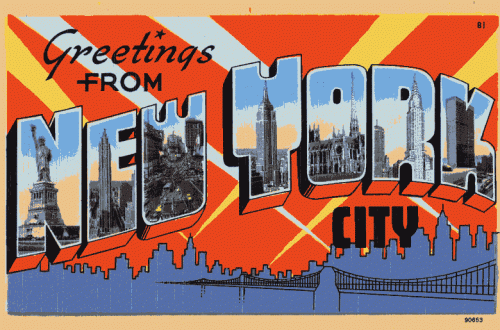
The Art to Being Funny
Every bar is a stage. A stage that puts you on display for guests to interact with for eight, ten, twelve hours a shift. Stephen Kittredge Cunningham, author of The Bartender’s Black Book, discusses creating your own personal “Act” behind the bar. This involves developing your own persona or being able to make sure everyone you serve is having a wonderful experience. But how does one develop a unique perspective or endless amounts of witty one-liners? How does one become funny on demand? Simple, by learning the rules of improv.
As explained in the book The Truth in Comedy:
“The truth is funny. That said it is possible to learn techniques that teach you how to become a funny performer, and they don’t involve memorizing pages of stale jokes. Honest discovery, observation, and reaction is better than contrived invention. After all, we’re funniest when we’re just being ourselves.”
Today’s article looks at the keys to developing your own bartending persona and providing your guests with an unforgettable experience.
How to Be Funny
Pay Attention
Pay attention by observing the people around you and the action that unfolds during the shift. Do they make an odd facial expression when they order? Do they have an exaggerated gait when they walk into the bar? How do these people interact with each other? Watch these actions and take note of them. The other key to paying attention is to listen. Listen to your co-workers and guests. Don’t just hear what they have to say, listen. Listen to what is said or what isn’t said. Listen to how it is said. Are they being playful, serious, nervous, curious, sincere, etc.? In the book Improvise: Scene from the Inside Out, which you can pick up a copy of here, Mick Napier states “The ‘how’ comprises everything from emotion to state of being to character to character attribute to intonation to physical score to point of view.” Once you’ve listened to people’s words or observed their actions, store them in the back of your mind. Hold it in your memory for use later. We’ve discussed how memory is a muscle which you can build up. Find our memory article here. You can also keep a pocket notebook and write down your observations or any funny thoughts that cross your mind in it. You’ll need to hold on to this information for use in making connections with it later on.
Make Connections
You make a connection to something previously said by recycling the idea with a new twist or heightening the idea itself. This process is described in the improv training manual Truth in Comedy, which you can purchase here, as: “The most effective, satisfying laughs usually come from an actor making a connection to something that has gone before. The connecting line must be truly inspired by the situation on the stage at the moment…etc” Let us look at when most of us are usually at our funniest, when we’re relaxed and surrounded by friends. You probably had some randomly funny event happen to you that you were telling them about. There was a moment or two where everyone was laughing hard at every word you said. Mick Napier explains, “What you were doing…is improvising from a character or point of view that was never violated. (Not violated by you not bailing on your perspective of the event or a character you’re describing.) Everything that came out of your mouth was funny because it was filtered through that character or disposition you created.”
Let’s practice our connection making by way of some games.
Mick Napier in his book Improvise: Scene from the Inside Out, lays out an absurd word association game:
Dada Monologue (Dada was an early 20th century art and literature movement based on deliberate nonsense.)
Start by looking at an object in your room and saying it’s name. As you talk, try not to stay on any idea too long and to make sense of nothing. In this example we see a candle.
“Candles are dogs when books tell a story of peanuts from heaven. When I was only seven dollars I went to my own factor brush, see? No one knows my father knew his cat was a green in the Texas town of pig boy…etc”
The second you start to make sense, change it up.
You get the picture. This game helps to loosen up your mind into making more random associations. This is good to do while you’re out walking around your neighborhood.
Heighten Your Connections
Take your discoveries and create more of them. Build them up to absurd levels. If a person pulls on the ear slightly when they order from you, then when you heighten that observation have them yanking their head against the bar top, while yelling “Pint of lager, please”. Do this with dialogue or emotions or perspectives or a character based on someone. Make more of it all. Let us practice by way of another game from Mick Napier.
Heightening
Stand. Start a scene, with words. Doing only one character’s dialogue, heighten your own character’s point of view. Pretend there is another character speaking gibberish. Pause for the other improviser’s “dialogue”. For example:
Me: That’s a cool-looking dog.
Pause
Me: Three-legged dogs are rare.
Pause
Me: Damn thing’s name is Rexy?
Pause
Me: It’s standing next to a cat with one ear.
Pause
Me: Never seen a green cat and a three-legged wiener dog.
This exercise will help you maintain and heighten your own thing, while sustaining your ability to filter anything else that happens, through your character.
Other Tools for Funny
Create characters by ad-libbing dialogue for people walking past your bar outside. Or what people are saying on a television that’s been muted. You can try doing this with a co-worker to gauge their reaction.
Environmental work is important. Interact with objects behind the bar. That muddler can double as a microphone. A cocktail shaker can be used as a telephone that you answer and take a message for a guest seated in front of you. Corny, I know. But it doesn’t take much to make people crack a smile. I knew an old bartender who kept a dead rotary phone under the bar so he could pretend to answer it in front of his guests. People eat it up.
Humor happens in three’s. Never heighten the same connections more than three times during a shift. Also odd numbers are a good rule for funny. Silly things should only occur an odd number of times.
Now work on your own bartending persona and let your funny coming shining through!





